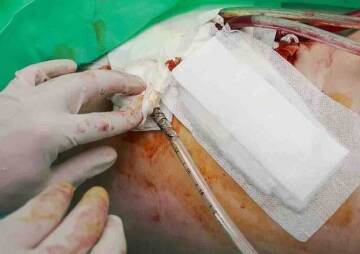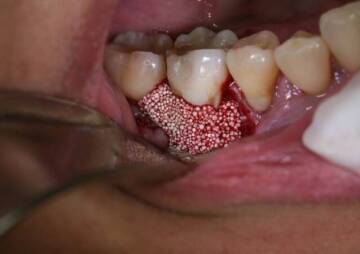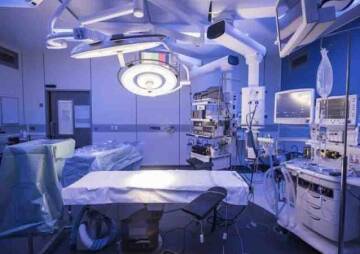-
Category
Craniomaxillofacial Surgery
Orthopedic Surgery
Spine Surgery
Orthopedic Implants
Hip Surgery
Knee Surgery
Pectus Excavatum
Bone Graft
Disinfectants
Healthcare
Postoperative infections, causes, treatment, prevention

Postoperative infections are fatal infections that are completely preventable. In this article, you will learn prevention and care methods.
Infection after surgery is a common problem in health care. The process of infection at the surgical site is complex and involves the interaction of several biological pathways at the molecular level. These infections cause pain, delayed recovery from surgery, long hospital stays, increased care costs, the need for long-term use of antibiotics, failure of surgery, and in acute cases, organ failure and even death.
Minimizing the number of infections depends on the patient's condition, the use of appropriate disinfectant solutions at the incision site, the sterile surgical environment, the use of sterilized instruments during surgery, and the appropriate and disinfected coverage of operating room staff.
You can read more about how infections develop after surgery, what their symptoms are and how they are treated in this article.
Postoperative infection and its types
Postoperative infection Any infection that occurs within 30 days after surgery and may be related to the operation itself or the postoperative period. These infections can include the infection itself in the wound itself, deeper infections in the cavities of the body, or infections far from the surgical site, such as pneumonia, mediastinitis, or even urinary tract infections. Surgical site infections (SSIs) occur in operations where the skin is incised, but deep infections occur in each operation.
The interval between surgery and the onset of symptoms of infection can be a great help in clarifying the source. For example, urinary tract infections and superficial wound infections appear 72 hours after surgery, but deep abscesses and pneumonia show up five to seven days after surgery.

Types of surgical site infections (SSIs)
SSI is relatively common and occurs in two to five percent of incision surgeries. The rate of infection varies depending on the type of surgery. This type of infection is divided into several groups by the Centers for Disease Control and Prevention (CDC).
Organ or space SSI infection that affects only the skin and subcutaneous tissues. These infections make up more than 50% of all surgical infections.
Deep incisional (SSI) infections involve the muscles and tissues around the muscle.

Organ or space SSI infection is separate from the incision site and may involve any organ or space in the body involved in surgery.
Other postoperative infections
Urinary tract infections, pneumonia, mediastinitis and cellulite, and abscesses are other postoperative infections.
Mediastinitis refers to an infection of the central parts of the chest, with the exception of the lungs and pleural space. This problem is usually seen after heart surgery and usually shows up within one to two weeks after surgery. However, sometimes the onset of symptoms may be delayed for four to six months. The incidence of this infection is between one and three percent between surgeries.
Cellulite and abscesses usually occur after bowel surgery. In many cases, it shows up in the first week after surgery, but sometimes it also occurs in patients after leaving the hospital. These cellulites and abscesses are treated with antibiotics. However, when the abscesses are deep, reoperation is needed to remove them.

Symptoms of infection after surgery
Clinical signs of postoperative infections vary depending on the patient's immune system, the depth and severity of the infection.
Symptoms of systemic infection
A systemic infection is an infection that moves around the body. Its most obvious symptoms include:
feeling exhausted
Feeling tired and bored occurs after all types of surgery. In the natural state, this fatigue gradually decreases and disappears. But in people who have an infection after surgery, the feeling of boredom returns suddenly after a few days of recovery. In this case, the patient sleeps too much and does not have the patience to do normal things.
Fever
People with infections feel fever and chills. The patient's appetite decreases and as a result he will suffer from dehydration and headache. Of course, low-grade fever is common in the first days after surgery, but high-grade fever will be a sign of infection for a long time.
Feeling of pain and burning when urinating
Urinary tract infection is one of the most common problems after surgery. Urinary incontinence, frequent urination, and lower abdominal pain may indicate a urinary tract problem.

Symptoms of infection at the surgical incision site
Heat at the cutting site
If heat is felt when touching the incision, it means that an infection has occurred and the body's cells are fighting it.
Swelling and hardening of the incision
If the tissue under the incision becomes infected and inflamed, the incision may begin to harden. Sometimes this condition is accompanied by swelling.

Red
The incision may become red, or red streaks may appear on the surrounding skin. Some of these rednesses are normal after surgery and go away over time, but if the redness gets worse, it indicates an infection.
Purulent discharge from the surgical site
Occasionally there is a reddish-green, green, white, or yellowish discharge from the surgical site due to a fungal infection.

the pain
The pain decreases with recovery from surgery, but if the pain level increases for no apparent reason, it may be a sign of infection.
Note: Patients with immunodeficiency diseases such as HIV have fewer signs and symptoms of infection due to the use of certain medications. Even in this group, the sensitivity of physical and laboratory tests is significantly reduced, so that despite severe infection, physical and laboratory examinations may have completely normal results. Diagnosis of infection in these people requires high accuracy and the use of imaging and microbiological methods.

What causes an infection after surgery?
Postoperative infection is caused by microbes, the most common of which are Staphylococcus, Streptococcus and Pseudomonas bacteria. These germs can be transmitted through contaminated surgical personnel, contaminated surgical instruments, air in the surgical environment, and microbes that are already on the surface or inside the body.
But there are other factors that increase the risk of infection, including:
- Long-term surgery (more than two hours)
- Having medical conditions such as cancer, weakened immune system, diabetes
- High age
- Overweight
- smoking
- Emergency surgeries
- Abdominal surgeries
When should you see a doctor if you have a postoperative infection?
Infection can be a very serious problem. Sometimes life-threatening infections can result from a very small wound. A urinary tract infection can lead to sepsis. This type of infection will spread through the bloodstream throughout the body.
Sometimes sepsis turns into septic shock. In this case, lower blood pressure and lead to organ failure.

Therefore, if you notice obvious signs of infection after surgery, see your doctor as soon as possible. These symptoms include:
- Persistent pain and irritation at the surgical site
- Fever above 38 ° C lasting more than 24 hours.
- Bloody, yellow or green, foul-smelling discharge from the wound
- Frequent urination and burning when urinating
How is an infection treated after surgery?
The use of oral antibiotics or intravenous injections can reduce infection.
Sometimes surgery may be needed to remove the pus, abscess, or hematoma.
If prostheses, plates, screws and other equipment are infected, they need to be removed as soon as possible.

Supportive care, including drinking fluids, fever-reducing medications, and painkillers, is often needed.
If the infection is severe, it is sometimes necessary to be hospitalized or even in the intensive care unit (ICU).
What measures are needed to prevent infection after surgery?
Infections are a serious complication of surgery and patients are more afraid of it. The good news is that many infections can be prevented. What needs to be done to prevent infections includes preoperative and postoperative precautions.
Preventive measures before surgery
Patient preparation
The patient to be operated on must be in the best medical condition before surgery. Controlling medical illnesses, avoiding behaviors that increase the risk of infection, quitting smoking, and ensuring good health are all ways to prevent infection.
Note: Maintaining normal blood glucose levels during surgery and in the postoperative period is very important. Elevated blood sugar levels in diabetic patients increase the risk of infection after surgery. For this reason, their blood sugar level should be at a normal level before surgery.
Reduce the number of bacteria
Bacteria live on our skin and during surgery, these bacteria can enter the body. The best way is to control the amount of bacteria on the body before entering the operating room.
Hair in the surgical area should be done just before surgery. It is better not to do this with a razor and just cut the hair.

Many surgeons recommend taking a shower with antiseptic soap before surgery. Using chlorhexidine wipes or soap is helpful in killing surface bacteria.
Use of antibiotics
The use of antibiotics may not be necessary for all surgeries, so be sure to ask your surgeon about the need to use it before surgery. For orthopedic surgery, antibiotics should be used if a metal implant (such as a hip or knee replacement) is used.
If antibiotics are needed, they should be taken one hour before surgery. Antibiotics may need to be continued after surgery, but the preoperative dose is more effective in preventing infection.

Suitable operating room conditions
The smaller the number of operating room staff, the lower the risk of infection after surgery. Reasonable temperature in the operating room will also affect the development of infections. It is thought that low temperatures reduce the risk of infection, which is not true. Keeping your body warm normally reduces the risk of infection.
In addition, the operating room and medical equipment used must be completely sterile and free of bacteria. Because Manib attaches great importance to patient health, it provides medical equipment that is highly safe and reduces the risk of infections.
The nano-silver disinfectants offered by Manib Company are also one of the effective disinfectants in killing all types of bacteria, germs and viruses. Nano-silver disinfectants can be used in the preoperative, intraoperative and postoperative stages.
Find disinfectants nanosilver: Mhsvshlat Nanvbayvsyd (Nano Bio Cide)
Preventive measures after surgery
Wound care
The patient needs to know complete information about how to care for the wound and bandage it. You need to know exactly when the bandage needs to be replaced or if it can wet the wound.
If it is necessary to replace the bandage, sterile bandages should be used and the person who intends to replace the bandage should wash the hands and sterilize the wound site with disinfectant.

Concluding remarks
Postoperative infections are one of the most common causes of infection in many surgeries. These infections can even cause death if they develop in the body. But these risks can only be reduced by preventive measures.






